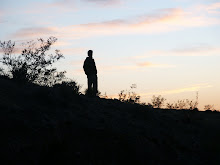Yesterday my host dad took me (by three trains) to Nara, another city south of Kyoto. We saw a lot of old Japanese buildings, most notably Todaiji, the great Buddha Hall, which contains the biggest Buddha statue I have ever seen (although not the biggest one in the world, apparently there is a bigger one in Thailand). We also, notably, went to Kasuga Taisha, a really beautiful Shinto shrine in the middle of a forest that has at its center a 1000-year-old tree. Nara has tons of old Japanese buildings all right next to each other, and is very specifically a different city than Kyoto. But I wonder, is it really a different city? These cities are intricately connected by train. The rail lines and roads all lead to each other, going back and forth in a complex network that I am unable to decipher. I know I live in Uji, but when I go to school in the morning, I get on a train at Ogura and get off at Imadegawa and somewhere in between I cross the boundary into Kyoto, but where is that line?
Last night, I sat outside the Karasuma-Shijo station in downtown Kyoto for about 25 minutes and did nothing but actively people-watch. The waves of people coming and going was really interesting. I saw people meeting their friends, I saw couples holding hands, I saw shoppers entering and exiting the bourgeois malls, I saw waves of school-kids in uniforms, I saw old people everywhere, I saw people that were having good days and people that were having bad days.
Today, my Landscape Gardens class took a field trip to Saihoji, a Zen temple and moss garden in the forest in western Kyoto. I had not yet been to that part of the city, and when we left the station at Kami-Katsura, I asked, are we still in Kyoto? The train journey had been about 45 minutes from school, and the neighborhood looked totally different from what I was used to. Kyoto is a big city...
here's what Italo Calvino has to say about this:
Continuous Cities 2
If on arriving at Trude I had not read the city's name written in big letters, I would have thought I was landing at the same airport from which I had taken off. The suburbs they drove me through were no different from the others, with the same little greenish and yellowish houses. Following the same signs we swung around the same flower beds in the same squares. The downtown streets displayed goods, packages, signs that had not changed at all. This was the first time I had come to Trude, but I already knew the hotel where I happened to be lodged; I had already heard and spoken my dialogues with the buyers and sellers of hardware; I had ended other days identically, looking through the same goblets at the same swaying navels.
Why come to Trude? I asked myself. And I already wanted to leave.
"You can resume your flight whenever you like," they said to me, "but you will arrive at another Trude, absolutely the same, detail by detail. The world is covered by a sole Trude which does not begin and does not end. Only the name of the airport changes."

3 comments:
Old people everywhere...
Gosh, I love you.
hooray for calvino in countries not ours. david. what do i need to read in guatemala?
Post a Comment